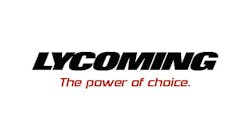Recip Technology
Powerplant Inspection
Some tips for 100-hour/annual inspections
September 2004
Editor's Note: The following is from the DVD/video 100-Hour/Annual Inspection ' Powerplant produced by Aircraft Technical Book Company and Westwood College of Aviation Technology. It provides tips for inspecting electrical systems and fuel leaks on piston engines during 100-hour/annual inspections. Photo by Dan Kasowski, UND Aerospace, 2004The electrical components use power created by the generator or alternator and store it in the battery. The heat generated by the engine combined with the vibration inside the engine compartment makes inspection of these components absolutely critical.
Starter
The attachment of the starter motor to the engine is checked by simply
grasping the starter itself and ensuring that it is firmly attached.
Each of the four mounting bolts is checked for tightness. The main
electrical lead going into the starter is checked for security, electrical
arcing, corrosion, and other obvious faults. The starter ring is
checked for missing or broken teeth. As this involves turning the
prop, be sure the magneto switch is turned off. You should still
observe caution in case an errant connection causes the engine to
misfire while being turned.
Alternator
Next is the alternator and alternator belt. The belt is checked for
proper tension and condition of its contacting surfaces. This can
be done with the belt in place simply by rotating the prop to expose
sections of the belt at a time between the pulleys. The inner surface
should feel soft, pliable, and free of damage. A hardened sheen may
be due to friction heat from slippage on the pulleys. Such a belt
will no longer grasp well and should be replaced. Belt tension should
be checked to allow approximately 1/4 inch of play in each direction.
If there is too much or too little play in the belt, then the position
of the alternator must be adjusted. To adjust the alternator position,
first loosen the retaining bolt and then pull the alternator into
the correct position. After checking for correct tension, re-tighten
the retaining nut. Be careful not to over-tighten the belt as this
could cause damage to the alternator bearings. Be sure that the safety
wire is replaced correctly, securing the tension belt to its bracket.
The electrical connections on the back of the alternator should be
securely attached with no signs of burns or corrosion. The alternator
attach points are checked for security and cracking, as is the mounting
area on the engine case itself. As the alternator is subject to significant
vibrations, cracking in this area is not uncommon. Finally, check
the overall security of the mounting by grasping the alternator and
ensuring no unwanted movement is observed.
Starter solenoid
The starter solenoid, typically located on the firewall, should also
be checked for security and vibration-induced cracking, both in the
device itself and around its mounting area. All wire connections
to and from the solenoid are also checked for security and electrical
burning.
Other electrical components
All other runs of wire in the engine compartment are checked for security,
proper support, chafing, or signs of electrical arcing. The tachometer
drive system is simply checked for security and any signs of damage.
Fluid leaks
No leak on an aircraft should be ignored. Fuel leaks and hydraulic
leaks demand immediate attention. Small oil leaks on the engine,
especially on older engines or radial engines, are quite common and
should be carefully monitored. Larger oil leaks should be corrected
at the source.
The check for fluid leaks begins with inspection of the lower cowl. Telltale staining will immediately tell you what is leaking, how badly, and will give clues to its source. Small amounts of staining are not uncommon, but still should be cleaned and noted so you have a good base for the next inspection.
Fuel leaks
Any size fuel leak demands immediate attention. Carefully check all
fuel lines, drain plugs, gascolators, and fittings for any signs
of leaking. To verify the source of a fuel leak, switch on the electric
boost pump to pressurize the system and with it running re-check
all suspected lines and fittings. With the system pressurized by
the boost pump, any source of fuel leaks will quickly become evident.
Pressurize the primer system to check its lines and fittings and those in each cylinder. Due to engine vibration, primer system leaks are not uncommon. If a fuel leak is found from a fitting, you can attempt to correct it by re-tightening the fitting or if it appears to be from an accessory such as a pump or a gascolator, replacing the faulty part.
Oil leaks
Signs of small oil leaks are not uncommon. However, the changing flow
of air inside the cowl will often make finding the source of the leak
difficult to find. Some areas to check include the oil filter (particularly
if it has not been tightened properly) oil hose fittings, the valve
covers, the dipstick joint into the crankcase, and the seams of the
case itself. If a leak appears to be coming from the seams of the
case halves, do not try to simply tighten the case bolts. Torquing
beyond manufacturer's
specs could easily crack the brittle case, causing problems far more
severe than a small leak.
Hydraulic fluid leaks
A reddish oily stain indicates hydraulic fluid leaks and most likely
a low level in the fluid reservoir. Typically, these systems are covered
during the airframe segment of the inspection, but while you're
noticing the stain, this would be a good time to check the associated
components and then check and top off the fluid reservoir.
This article was based on a portion of the video 100-Hour/Annual Inspection - Powerplant. The video covers all aspects of the powerplant portion of the 100-hour/annual inspection including pre-inspection checks, compression check, oil system, spark plugs, ignition harness, magneto and timing, electrical system, carburetor and induction, cooling system, exhaust system, engine mount and firewall, propellor, and post inspection check. There is also a bonus section on safety wiring included. To learn more or to place an order, visit www.AMTbooks.com.





